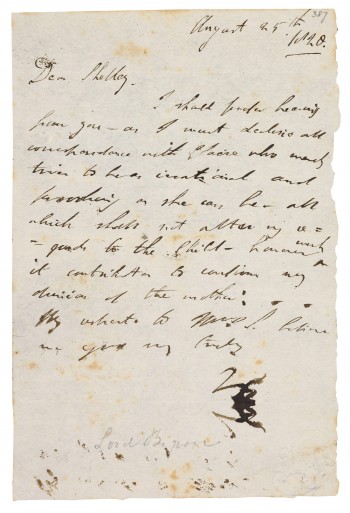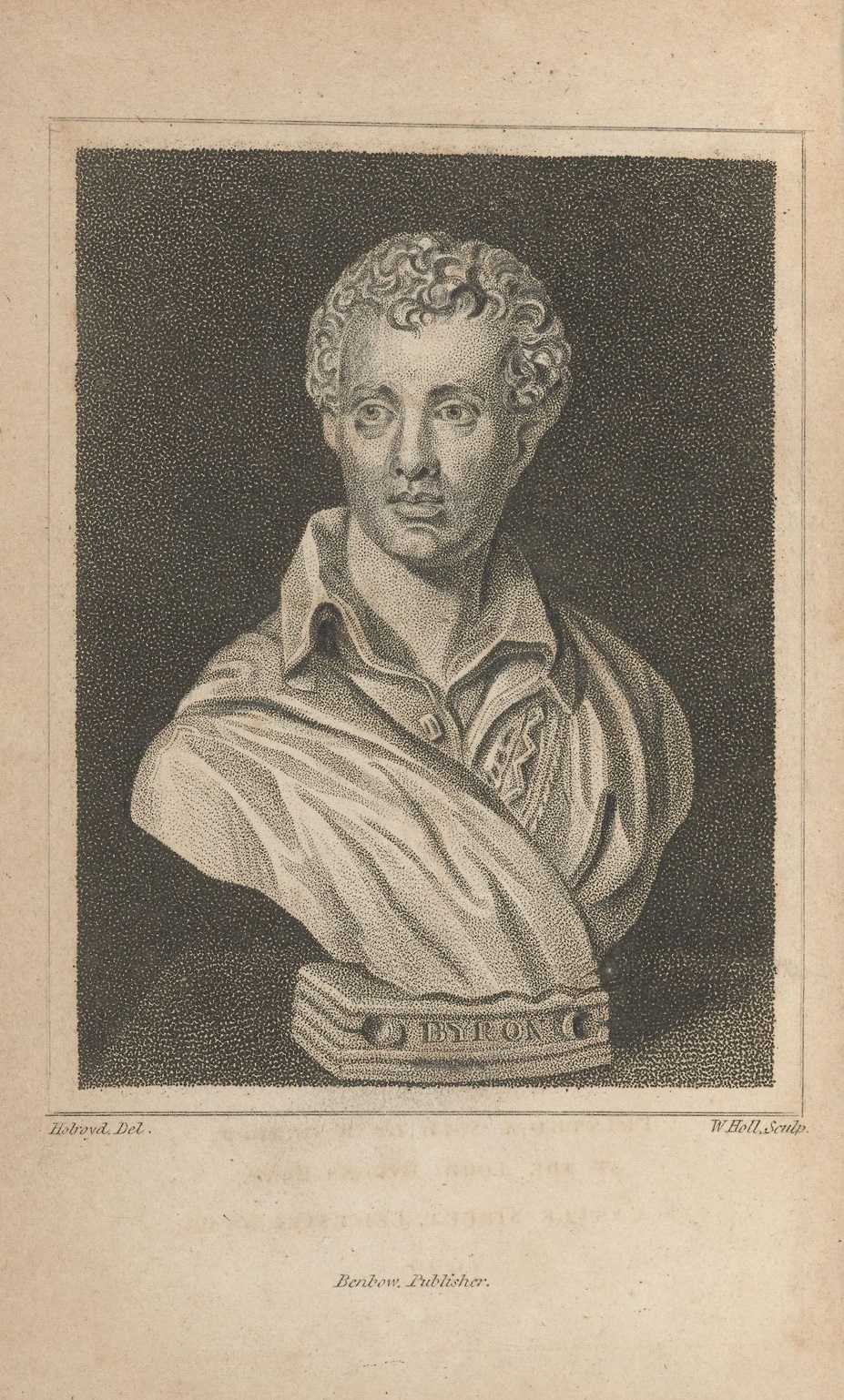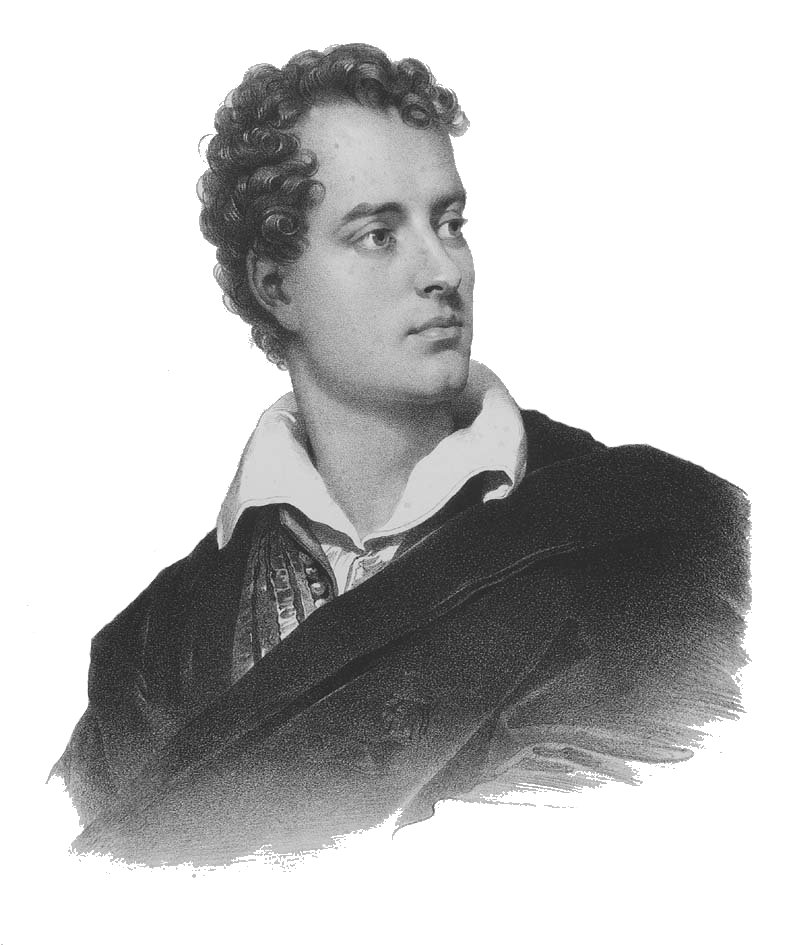|
Byron
George Gordon Byron, 6th Baron Byron (22 January 1788 – 19 April 1824), known simply as Lord Byron, was an English romantic poet and peer. He was one of the leading figures of the Romantic movement, and has been regarded as among the greatest of English poets. Among his best-known works are the lengthy narratives '' Don Juan'' and '' Childe Harold's Pilgrimage''; many of his shorter lyrics in '' Hebrew Melodies'' also became popular. Byron was educated at Trinity College, Cambridge, later traveling extensively across Europe to places such as Italy, where he lived for seven years in Venice, Ravenna, and Pisa after he was forced to flee England due to lynching threats. During his stay in Italy, he frequently visited his friend and fellow poet Percy Bysshe Shelley. Later in life Byron joined the Greek War of Independence fighting the Ottoman Empire and died leading a campaign during that war, for which Greeks revere him as a folk hero. He died in 1824 at the age of 36 f ... [...More Info...] [...Related Items...] OR: [Wikipedia] [Google] [Baidu] |
John Byron
Vice-Admiral John Byron (8 November 1723 – 1 April 1786) was a British Royal Navy officer and explorer. He earned the nickname "Foul-Weather Jack" in the press because of his frequent encounters with bad weather at sea. As a midshipman, he sailed in the squadron under George Anson on his voyage around the world, though Byron made it only to southern Chile, where his ship was wrecked. He returned to England with the captain of HMS ''Wager''. He was governor of Newfoundland following Hugh Palliser, who left in 1768. He circumnavigated the world as a commodore with his own squadron in 1764–1766. He fought in battles in the Seven Years' War and the American Revolution. He rose to Vice Admiral of the White before his death in 1786. His grandsons include the poet Lord Byron and George Anson Byron, admiral and explorer, who were the 6th and 7th Baron Byron, respectively. Early career Byron was the second son of William Byron, 4th Baron Byron and Frances Berkeley, the daughte ... [...More Info...] [...Related Items...] OR: [Wikipedia] [Google] [Baidu] |
Anne Isabella Milbanke
Anne Isabella Noel Byron, 11th Baroness Wentworth and Baroness Byron (''née'' Milbanke; 17 May 1792 – 16 May 1860), nicknamed Annabella and commonly known as Lady Byron, was wife of poet George Gordon Byron, more commonly known as Lord Byron. A highly educated and strictly religious woman, she seemed an unlikely match for the "amoral" and agnostic poet, and their marriage soon ended in acrimony. Lady Byron's reminiscences, published after her death by Harriet Beecher Stowe, revealed her fears about alleged incest between Lord Byron and his half-sister. The scandal about Lady Byron's suspicions accelerated Byron's intentions to leave England and return to the Mediterranean where he had lived in 1810. Their daughter Ada worked as a mathematician with Charles Babbage, the pioneer of computer science. Lady Byron had felt that an education in mathematics and logic would counteract any possible inherited tendency towards Lord Byron's perceived insanity and romantic excess. Names ... [...More Info...] [...Related Items...] OR: [Wikipedia] [Google] [Baidu] |
Allegra Byron
Clara Allegra Byron (12 January 1817 – 20 April 1822) was the illegitimate daughter of the poet George Gordon, Lord Byron and Claire Clairmont. Born in Bath, England, she was initially named Alba, meaning "dawn", or "white", by her mother. At first she lived with her mother, her mother's stepsister, Mary Shelley, and Mary's husband Percy Bysshe Shelley. When she was fifteen months old, she was turned over to Byron, who changed her name to Allegra. Byron placed her with foster families and later in a Roman Catholic convent, where she died at the age of five of typhus or malaria. Early life Allegra was the product of a short-lived affair between the Romantic poet and her starstruck teenage mother, who was living in reduced circumstances in the household of her stepsister and brother-in-law. Clairmont wrote to Byron during the pregnancy begging him to write back and promise to take care of her and the baby; however, Byron ignored her pleas.Eisler, p. 353 After her birth, she wa ... [...More Info...] [...Related Items...] OR: [Wikipedia] [Google] [Baidu] |
Ada Lovelace
Augusta Ada King, Countess of Lovelace (''née'' Byron; 10 December 1815 – 27 November 1852) was an English mathematician and writer, chiefly known for her work on Charles Babbage's proposed mechanical general-purpose computer, the Analytical Engine. She was the first to recognise that the machine had applications beyond pure calculation, and to have published the first algorithm intended to be carried out by such a machine. As a result, she is often regarded as the first computer programmer. Ada Byron was the only legitimate child of poet Lord Byron and Lady Byron. All of Byron's other children were born out of wedlock to other women. Byron separated from his wife a month after Ada was born and left England forever. Four months later, he commemorated the parting in a poem that begins, "Is thy face like thy mother's my fair child! ADA! sole daughter of my house and heart?" He died in Greece when Ada was eight. Her mother remained bitter and promoted Ada's interest in ... [...More Info...] [...Related Items...] OR: [Wikipedia] [Google] [Baidu] |
William Byron, 5th Baron Byron
William Byron, 5th Baron Byron (5 November 1722 – 19 May 1798), was a British nobleman, peer, politician, and great-uncle of the poet George Gordon Byron who succeeded him in the title. As a result of a number of stories that arose after a duel, and then because of his financial difficulties, he became known after his death as "the Wicked Lord" and "the Devil Byron". Early life Byron was the son of William Byron, 4th Baron Byron, and his wife the Hon. Frances Berkeley, a descendant of John Berkeley, 1st Baron Berkeley of Stratton. He inherited his title upon the death of his father on 18 August 1736. He clearly had some military aspirations, enlisting in the Royal Navy as a midshipman aged 14 and serving aboard HMS ''Victory'' as a lieutenant at 18. At 17 he was also listed as a founding Governor of the Foundling Hospital, a popular charity project to look after abandoned babies that had previously been championed by his mother. After an abortive stint as a captain in the ... [...More Info...] [...Related Items...] OR: [Wikipedia] [Google] [Baidu] |
Childe Harold's Pilgrimage
''Childe Harold's Pilgrimage'' is a long narrative poem in four parts written by Lord Byron. The poem was published between 1812 and 1818. Dedicated to " Ianthe", it describes the travels and reflections of a world-weary young man, who is disillusioned with a life of pleasure and revelry and looks for distraction in foreign lands. In a wider sense, it is an expression of the melancholy and disillusionment felt by a generation weary of the wars of the post- Revolutionary and Napoleonic eras. The title comes from the term ''childe'', a medieval title for a young man who was a candidate for knighthood. The poem was widely imitated and contributed to the cult of the wandering Byronic hero who falls into melancholic reverie as he contemplates scenes of natural beauty. Its autobiographical subjectivity was widely influential, not only in literature but in the arts of music and painting as well, and was a powerful ingredient in European Romanticism. Origins The poem contains elem ... [...More Info...] [...Related Items...] OR: [Wikipedia] [Google] [Baidu] |
Don Juan (poem)
In English literature, ''Don Juan'' (1819–1824), by Lord Byron, is a satirical, epic poem that portrays the Spanish legend of Don Juan not as a womaniser, but as a man easily seduced by women.English 151-03 ''Byron's 'Don Juan' notes'' , Gregg A. Hecimovich As genre literature, ''Don Juan'' is an , written in '' ottava rima'' and presented in sixteen cantos. Lord Byron derived the character, but not the story, from the same Spanish legend. Upon publication in 1819, cantos I and II were criticised as immoral, because the author Byron too freely ridiculed the soc ... [...More Info...] [...Related Items...] OR: [Wikipedia] [Google] [Baidu] |
George Byron, 7th Baron Byron
Admiral George Anson Byron, 7th Baron Byron (8 March 1789 – 1 March 1868) was a British nobleman, naval officer, peer, politician, and the seventh Baron Byron, in 1824 succeeding his cousin the poet George Gordon Byron, 6th Baron Byron in that peerage. As a career naval officer, he was notable for being his predecessor's opposite in temperament and lifestyle. Parentage and ménage He was the only son of Honorable George Anson Byron and Charlotte Henrietta Dallas, and grandson of the admiral and explorer The Hon. John Byron, who circumnavigated the world with George Anson in 1740–44. He married Elizabeth Mary Chandos Pole on 18 March 1816. She was the daughter of Sacheverell Pole Esq., of Radbourne Hall, b. 16 June 1769. During this man's lifetime, he became of representative of Sir John Chandos, K.G., and by sign manual, or deed poll assumed the additional surname of Chandos. Elizabeth was descended from a well documented long line of the Pole family, including Car ... [...More Info...] [...Related Items...] OR: [Wikipedia] [Google] [Baidu] |
Claire Clairmont
Clara Mary Jane Clairmont (27 April 1798 – 19 March 1879), or Claire Clairmont as she was commonly known, was the stepsister of the writer Mary Shelley and the mother of Lord Byron's daughter Allegra. She is thought to be the subject of a poem by Percy Bysshe Shelley. Early life Clairmont was born in 1798 in Brislington, near Bristol, England, the second child and only daughter of Mary Jane Vial Clairmont. Throughout her childhood, she was known as Jane. In 2010 the identity of her father was discovered to be John Lethbridge (1746–1815, after 1804 Sir John Lethbridge, 1st Baronet) of Sandhill Park, near Taunton in Somerset. Her mother had identified him as a "Charles Clairmont", adopting the name Clairmont for herself and her children to disguise their illegitimacy. It appears that the father of her first child, Charles, was Charles Abram Marc Gaulis, "a merchant and member of a prominent Swiss family, whom she met in Cadiz". In December 1801, when Clairmont was three y ... [...More Info...] [...Related Items...] OR: [Wikipedia] [Google] [Baidu] |
John Byron (British Army Officer)
Captain John Byron (1757 – 2 August 1791) was a British Army officer and letter writer, best known as the father of the poet Lord Byron. In 1824, an obituary of his son gave him the nickname "Mad Jack Byron", and though there is no evidence for this in his own lifetime, it has since stuck – certainly he was called "Jack" by his family members and referred to himself as such. Early life Byron was the sixth child and eldest son of Vice-Admiral Hon. John Byron and Sophia Trevanion and grandson of William Byron, 4th Baron Byron of Rochdale. The earliest record of him is his baptism record, dated 17 March 1757 in Plymouth. After his family moved to London he was educated at Westminster School. He gained the rank of captain in the Coldstream Guards and was dispatched with his regiment to Philadelphia, where he managed to accrue considerable debts during the American Revolution. Marriages In 1778, Jack became embroiled in an affair with the married Amelia Osborne, Marchione ... [...More Info...] [...Related Items...] OR: [Wikipedia] [Google] [Baidu] |
Hebrew Melodies
''Hebrew Melodies'' is a collection of 30 poems by Lord Byron. They were largely created by Byron to accompany music composed by Isaac Nathan, who played the poet melodies which he claimed (incorrectly) dated back to the service of the Temple in Jerusalem. Background Nathan was an aspiring composer who was the son of a hazzan ( synagogue cantor) of Canterbury, of Polish-Jewish ancestry, and was originally educated to be a rabbi. He had published an advertisement in the London '' Gentleman's Magazine'' in May 1813 that he was "about to publish 'Hebrew Melodies', all of them upward of 1000 years old and some of them performed by the Ancient Hebrews before the destruction of the Temple." At this stage, he had no words to go with the melodies which he intended to adapt from synagogue usage (although in fact many of these tunes had originated as European folk-melodies and did not have the ancestry he claimed for them). He initially approached Walter Scott, before writing to By ... [...More Info...] [...Related Items...] OR: [Wikipedia] [Google] [Baidu] |
Romantic Movement
Romanticism (also known as the Romantic movement or Romantic era) was an artistic, literary, musical, and intellectual movement that originated in Europe towards the end of the 18th century, and in most areas was at its peak in the approximate period from 1800 to 1850. Romanticism was characterized by its emphasis on emotion and individualism, clandestine literature, paganism, idealization of nature, suspicion of science and industrialization, and glorification of the past with a strong preference for the medieval rather than the classical. It was partly a reaction to the Industrial Revolution, the social and political norms of the Age of Enlightenment, and the scientific rationalization of nature. It was embodied most strongly in the visual arts, music, and literature, but had a major impact on historiography, education, chess, social sciences, and the natural sciences. It had a significant and complex effect on politics, with romantic thinkers influencing conservatism, liber ... [...More Info...] [...Related Items...] OR: [Wikipedia] [Google] [Baidu] |








